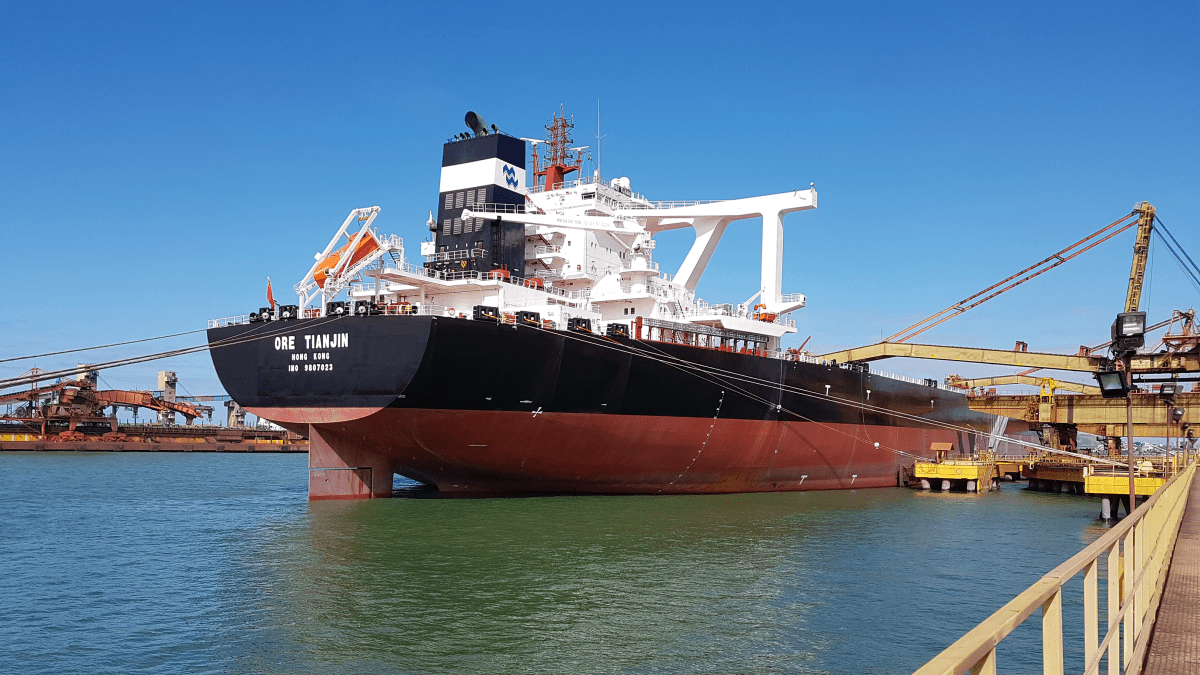Using multi-fuel tank design, VLOCs chartered by Brazilian mining giant Vale could be retrofitted to burn LNG, methanol and ammonia
DNV has issued an approval-in-principle (AiP) to a multi-fuel tank design that will allow iron ore carriers chartered by Vale to be adopted to operate on LNG, methanol and ammonia.
The Brazilian mining giant said the tank design was developed in partnership with Norwegian companies Brevik Engineering and Passer Marine. Passer Marine and Passer Langyu, both part of the Passer Group, specialise in cryogenic insulation for cargo tanks, offering various solutions for IMO type A, B and C tanks, and piping for LNG carriers.
Vale said the multi-fuel tank design emerged from its Ecoshipping programme, which investigates the use of technologies to reduce carbon emissions from shipping. A preliminary study estimates that emissions reductions can range from 40% to 80% when a Guaibamax-class very large ore carrier (VLOC) is powered by methanol and ammonia, or up to 23% in the case of LNG.
Dozens of second-generation VLOCs are in operation have been designed as LNG Ready, with an under-deck compartment conceived to accommodate a large fuel tank.
With its AiP in hand, Vale expects to conduct a pilot project in the future using the multi-fuel tank in a VLOC.
“The multi-fuel tank system removes some of the main barriers to the adoption of alternative fuels, which include regulatory and infrastructure uncertainty in defining the optimal fuel,” said Vale shipping technical manager Rodrigo Bermelho. “It is a solution for the future, but one that could also impact existing ships, many of which have more than 20 years of service life ahead of them. Allied to other energy-efficiency technologies in progress at Vale, such as rotating sails and air lubrication, it allows us to have more efficient vessels with very low carbon emissions,” added Mr Bermelho.
Last year, in an effort to test emissions-reducing technologies, it teamed with Korean shipowner Pan Ocean to install five rotor sails from Norsepower on Sea Zhoushan. The pilot project was expected to yield an estimated reduction of 3,400 tons of CO2 emissions annually. In another pilot project with Pan Ocean, Sea Victoria was fitted with an air lubrication system from Silverstream.
“Conservative estimates point to a fuel reduction of around 5% to 8%, with a potential reduction of 4.4% in annual emissions from Vale´s maritime transport of iron ore”, explains Mr Bermelho.
New Type-B tank insulation developed
In parallel with supporting Vale’s development project, Passer Marine received a general approval for ship application (GASA) from DNV for its PB11 B-tank insulation system with spray insulation, secondary barrier, and leakage detection system.
While traditional spray foam used for LNG applications is not compatible with either methanol or ammonia, Passer Marine said during joint development work with Vale, it struck upon a spray foam composition based on PB1-technology that is suitable for those fuels. Working with DNV, the spray foam has been compatibility tested and approved at a DNV-accredited laboratory in Norway.






